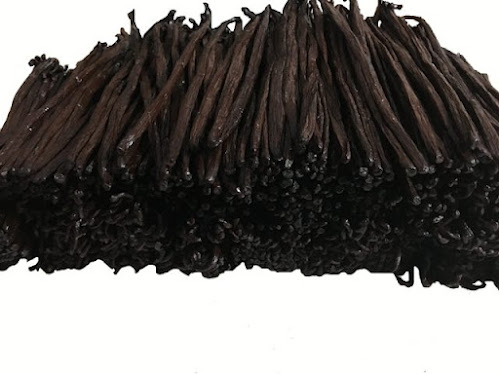Madagascar Vanilla Beans - World's Top-notch Quality of Vanilla
Right now, you most likely have just one Madagascar product in your home—no more, no fewer. Despite its odd ranking as the world's top producer of vanilla, Madagascar continues to be the continent that produces the majority of this ubiquitous natural flavour. Simply said, Madagascar vanilla beans are vanilla beans that are cultivated and aged on the island of Madagascar. Madagascar is the origin of both Planifolia and Bourbon vanilla beans. The greatest vanilla beans are made in Madagascar, which has a long tradition of cultivating and curing the plant. The vanilla crop in Madagascar has been handed down through the centuries, producing better-smelling, less susceptible to mildew vanilla beans. Although other tropical nations also produce great vanilla beans, when in doubt, experts choose Madagascar vanilla beans.
The Gold Standard in vanilla beans is Madagascar, but why?
Instead of beans, the fruit or seed pod of the orchid Vanilla planifolia is referred to as Madagascar Vanilla Beans. Only a small number of the approximately 100 species in the vanilla genus are commercially accessible, but the vanilla orchid is a native of Mexico. Vanilla planifolia, the most popular kind, is grown in Madagascar and Mexico. The kind of vanilla we consume is not indigenous to Madagascar; it was imported from a continent 10,000 kilometres away. In the spice industry, Madagascar vanilla beans are the benchmark for premium vanilla beans. The Sava region in humid northeastern Madagascar is where the majority of the best vanilla beans in the world are cultivated. These fragile plants thrive in the rich, loamy soil, which has lots of rainfall. Although the Sava area of Madagascar has almost ideal growth conditions for vanilla, it is the people of Madagascar who give this specific spice its extraordinary flavour.
Is Madagascar vanilla bean really the best?
Who you ask will determine everything. The best vanilla bean may come from Madagascar for a multitude of reasons.
Madagascar vanilla beans are consistently acknowledged as the greatest vanilla beans due to the overall homogeneity of the beans produced. The word "Bourbon vanilla" originates from a neighbouring island, not Madagascar itself, although it is now mostly associated with the vanilla species Vanilla Planifolia, which grows in Comoros, Madagascar, Tanzania, Uganda, and other locations.
The production of the green vanilla crop is quite high in contrast to the rest of the world. Up to 80% of the vanilla bean supply in the world is grown and produced in Madagascar. Huge vanilla houses and tiny operation shareholders, such as co-ops, lone preparers, and families of preparers, make up this vanilla monopoly.
It's a great vanilla to use for making vanilla extract. Without a doubt, Madagascar vanilla beans make top-notch vanilla extract. In foods like cremebrulee, vanilla ice cream, and even Coca-Cola, to name a few, the beans provide a rich, aromatic, and recognisable vanilla flavour that consumers have come to expect and appreciate.
How to Use Madagascar Vanilla Beans?
To utilise Madagascar vanilla beans, use a paring knife to cut the bean lengthwise. Use the spine of the knife to scrape out the vanilla caviar, which are the dark inner seeds. The vanilla caviar may then be added to sauces, syrups, cake batter, cookie dough, frosting, and other recipes.
The scraped-out pod has a strong flavour and may be used to flavour a bottle of alcoholic beverages or made into vanilla sugar by soaking it for about a week in a jar of cane sugar.
Popular sweet spices to pair with vanilla include cocoa powder, cinnamon, nutmeg, mace, ginger, anise seed, cloves, allspice, and lavender buds.
How Do Madagascar Vanilla Beans Taste?
Vanillin, an organic substance that provides vanilla its sweet, toasted, and creamy qualities, is what gives vanilla its distinctive flavour. The fact that Madagascar vanilla beans have a richer flavour than beans from other countries is due in part to their higher vanillin content. There are more than 250 other flavourings in real vanilla beans in addition to vanillin, which contribute to the rich spice, floral, and fruity flavours.




Comments
Post a Comment